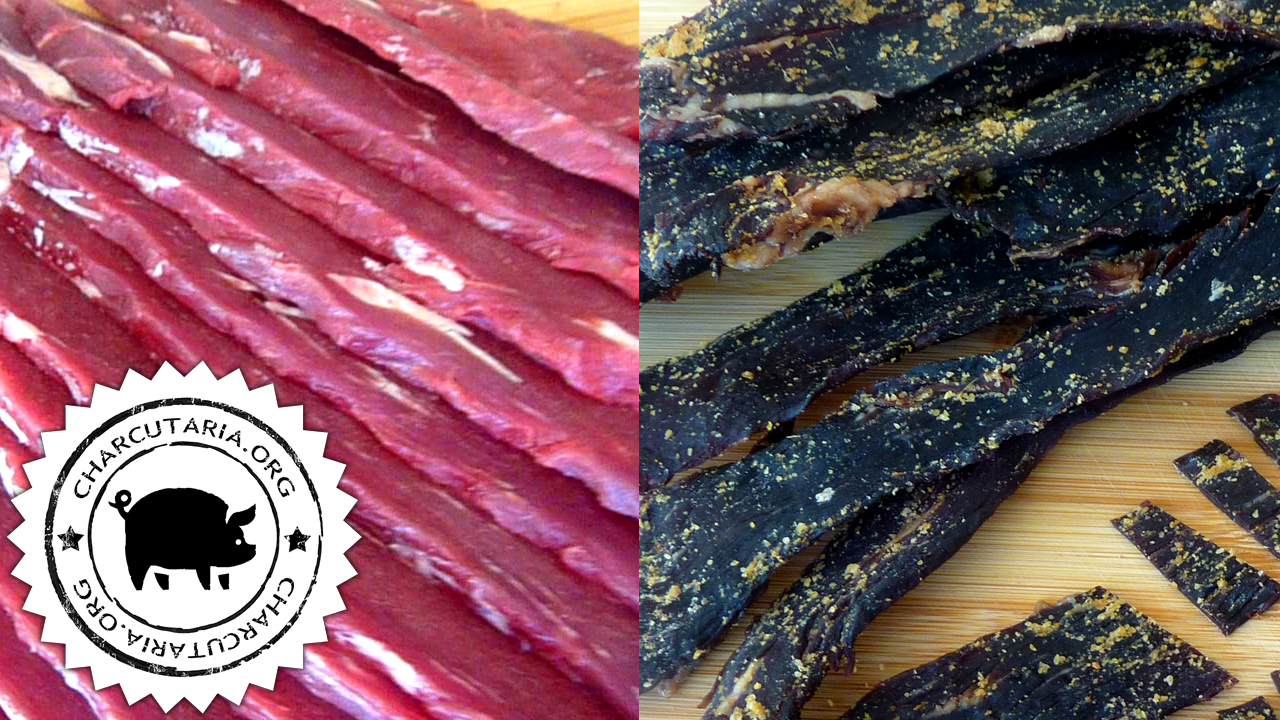
Kilishi is dried meat traditional form of Nigeria and other arid or semi-arid areas of West Africa.
Kilishi is a product obtained from lean sliced muscles of beef, goat or sheep meat, and is produced on a large scale under the hot and dry conditions prevailing from February to May. It is produced by drying thin slices of meat in the sun. However, recent experience indicates that kilishi can also be produced industrially in a hot air oven. Connective tissue and fatty material are cut from the meat with a knife into thin slices about 0.5 cm thick, 15 cm long and up to 6 cm wide.
Traditionally, slices of meat for kilishi are spread out on papyrus mats or elevated tables in the sun to dry. Wire nets or easily washable plastic nets are currently recommended for horizontal drying of meat. The vertical drying method can also be used.
In the first stage of drying, which takes two to six hours, the moisture content of the meat slices must be reduced to around 40 to 50%. The slices are then placed in an infusion containing defatted peanut flour or soy flour as the main component (about 50%), water (30%), garlic (10%), bouillon cubes (5%), salt (2%) and spices like pepper, ginger and onion. The “dry” slices of meat must absorb the infusion up to almost three times their weight.
After infusion, the wet product is exposed to the sun again to dry. Drying at this stage is much faster than in the first stage. When the moisture content of the slices is reduced to 20 to 30%, a process that takes two to three hours depending on weather conditions and product dimensions, the slices are finally roasted over a fire for about five minutes. The roasting process helps improve flavor development and inactivate contaminating microorganisms. Baked kilishi is therefore superior in flavor to the unbaked version.
After baking, the final moisture content varies between 10 to 12%. This humidity will further decrease during storage at room temperature to a very low level, close to 7%. When packaged in vacuum plastic bags, the product remains stable at room temperature for a period of approximately one year.
Paste ingredients (suya paste)
- 50 g peanut flour or soy flour;
- 30 g water;
- 10 g garlic powder;
- 5 g meat bouillon cube;
- 2 g powdered ginger;
- 1 g onion powder;
- 1 g cayenne pepper;
- 1 g smoked paprika.
Kilishi ingredients
- 800 g of lean beef;
- 10 g of salt;
- 50 g of suya;
- 200 ml of water.
Kilishi preparation
Clean and freeze the meat to make it easier to cut into thin slices;
Cut into slices of no more than half a centimeter;
Leave in the sun or roast in an oven heated to 50ºC until the meat loses between 40% and 50% of its initial weight;
Mix the salt, suya and water together with the meat and leave for 30 minutes until the meat is hydrated again in the seasoning;
Return to the sun or oven until the meat loses between 70% and 80% of its initial weight;
Store in a cool, dry place, away from insects or refrigerated to further increase shelf life. It is a product with a very high shelf life but I did not find any specific expiration date.
Adaptation of the recipe originally published in http://www.fao.org/3/x6932e/X6932E02.htm




How interesting, I even shared it on my Facebook.